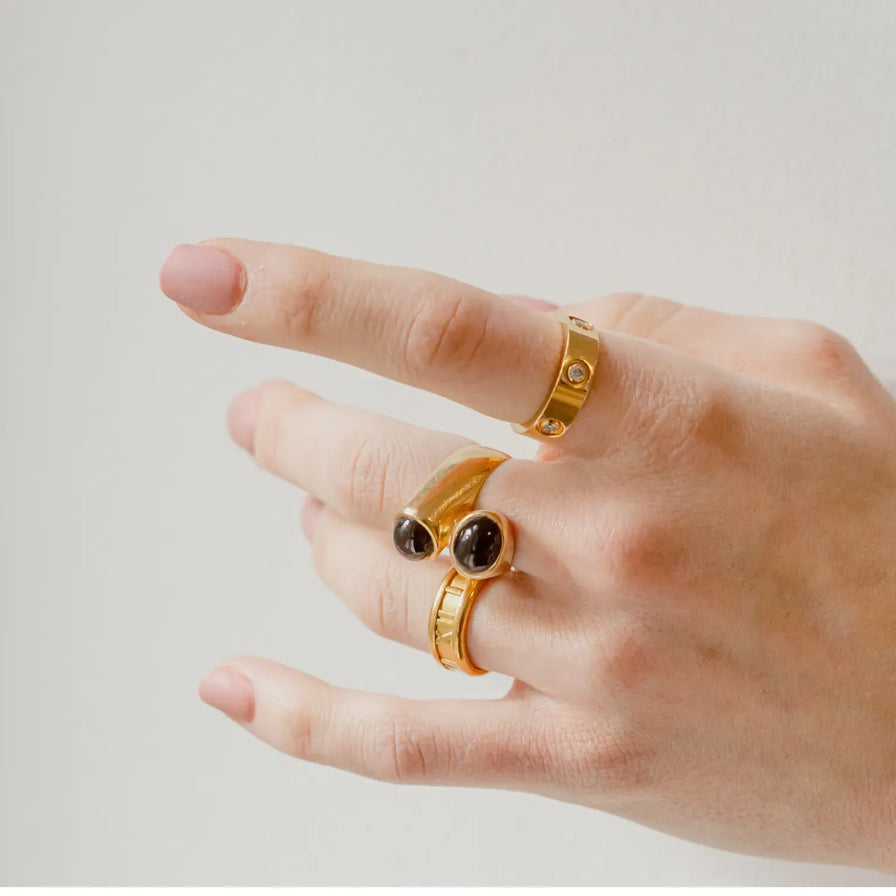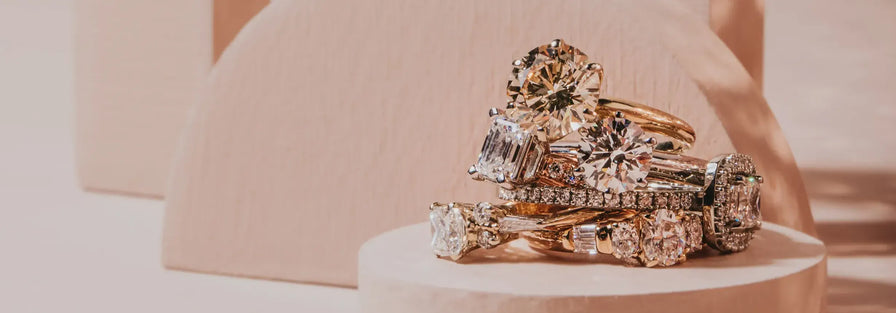The 4C’s are here to help:
Shopping for diamonds can be intimidating. Why does one stone that looks exactly the same as another sometimes cost thousands of dollars more? What am I not seeing? The answer to that question is a lot of things. Diamonds have a lot of characteristics invisible to the naked eye that can drastically increase of decrease the price. In short, if you’re planning on buying a diamond and want to get the best value, you should become familiar with these characteristics, also known as the 4C’s (carat, cut, colour and clarity).
The 4C’s allow for systematic grading of diamonds that ensures their value remains uniform across all markets. This is good news to diamond shoppers! The 4C’s are here to help us get fair and transparent prices on our diamonds so it’s a good idea to know what they all mean. Let’s begin.
Carat: How heavy are we talking?
Carat is the most distinguishable to the average shopper, as it represents the weight of the diamond. For example, a 1-carat stone is twice as heavy as a 0.5-carat stone. You may be thinking, ‘I don’t care how much my diamond weighs’ but remember that the weight of the stone is linked to its size, so a 1-carat stone is often around twice the size of a 0.5-carat stone. Carat can be abbreviated into ‘ct’ and ‘ctw’. While ‘ct’ is simply the short hand for carat and represents the weight of an individual stone, ‘ctw’ stands for ‘total carat weight’ and represents the weight of multiple stones. For example, a ring with three equally sized stones and a 1.5 ctw then has three 0.5 ct diamonds.
Cut: Look at that sparkle!
Cut can range from ‘poor’ to ‘ideal’ and represents the diamond’s ability to reflect light back out, or in other words its luminescence or brightness. Cut is very important as an increase in cut quality may aesthetically overwhelm a decrease in carat size, allowing you to potentially save money on a marginally smaller but much brighter stone! Diamond cuts include:
- Poor
- Fair
- Good
- Very good
- Excellent
Colour: Wait, aren’t diamonds colour-LESS?
Diamond colours range from ‘colourless’ (most rare) to a ‘yellow-grey’ (least rare). You guessed it, the rare colourless stones are the most valuable and are ranked at the top of the scale at a D, E or F. The most yellow-grey diamonds fall to the bottom of the scale at S-Z. In short, the scale for grading diamond colours is the alphabet, minus the A, B and C. Diamonds ranked G-J are denoted as ‘near colourless’, but remain colourless to the naked eye, and allow shoppers to get the most bang for their buck!
Clarity: Flaws and all!
Clarity measures the flaws in diamonds; also known as the inclusions. Inclusions kind of look like tiny scratches or fibers and can be both on the outside and inside of the stone. The important thing to remember here is that inclusions are often invisible to the naked eye, so this may be a good C to compromise on in order to bump up another. Also, each diamond is different, so a stone with a better cut may have more but less noticeable inclusions than a stone with a cut not designed to hide the diamond’s flaws. Diamond clarities include:
- I1, I2 & I3 (included 1, 2 & 3: 1 being best)
- SI1 & SI2 (slightly included 1 & 2)
- VS1 & VS2 (very slightly included 1 & 2)
- VVS1 & VVS2 (very, very slightly included 1 & 2)
- IF (internally flawless)
- F (entirely flawless)
Applying your knowledge
When choosing a diamond you should decide what’s most important to you; brightness (cut) or size (carat), flaws (clarity) or transparency (colour). Everyone is different and so should their diamond be! You can balance the 4C’s to find the diamond that’s perfect for you so take your time a have an open mind!


